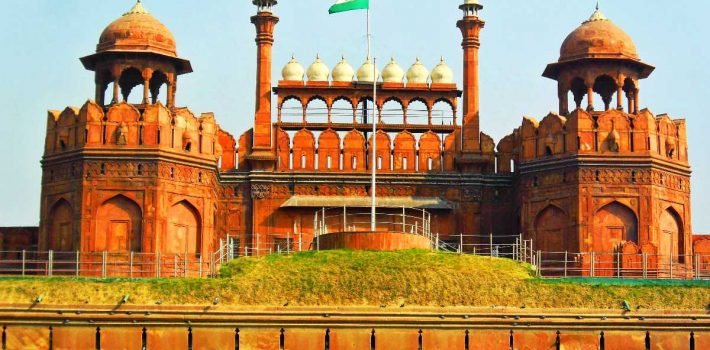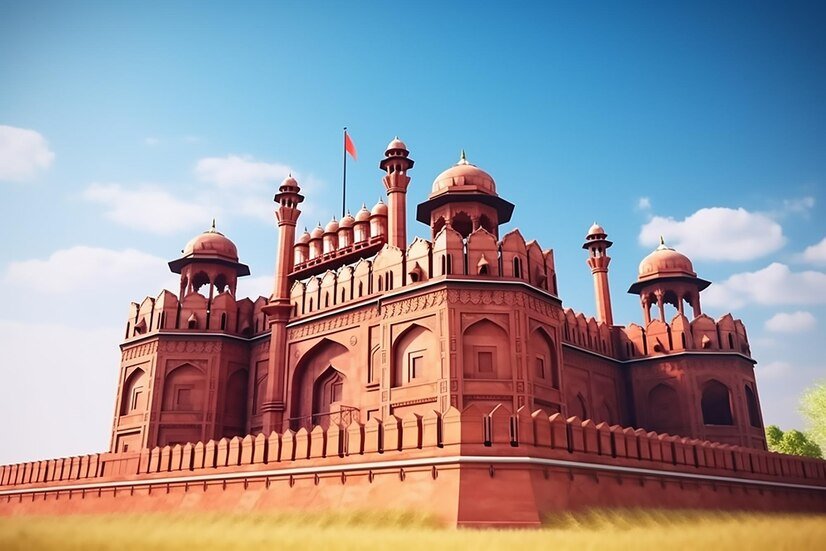Ever felt how it would be to walk right into history? It is just that-the Red Fort, Delhi, India, offers a walk deep in time, full of grandeur and skill. Its testimony touches the enriching cultural heritage of India with brilliant architecture. It is no mere representation of an ancient monument but a mute witness to an era of the glorious past of India-from the rise and fall of empires down to the dawn of freedom.
History of the Red Fort
Then Shah Jahan decided to shift his capital from Agra to Delhi and chose the Red Fort as the hub of his new capital-Shahjahanabad. For almost two hundred years, till the colonization of India by the British, it remained a primary state residence of the Mughal emperors.
The Red Fort has also played a very important role in the struggle for India’s independence during the British colonial era. Many of the leaders of the Indian National Army tried by the British here. That automatically makes the fort a sign of resistance and resilience.
Architecture of the Red Fort

The Red Fort depicts the ultimate essence of the Persian, Timurid, and Indian style. It is, therefore, considered the masterpiece of Mughal art. There were vast uses of red sandstones to build big parts of this fort. Famous for gigantic walls, these more-than-2-km-long walls and heights up to 18 meters on the river side and up to 33 meters on the city side show strategic thoughts in their construction.
Besides marvelous carvings and inlaid ornaments, the Red Fort has been regarded as one of the most striking features of unquenchable artistic talent of the Mughal craftsmen. Arched gateways, domes and minute latticework have marked the architecture of the fort as the hallmarks of the Mughal design.
Structures within the Red Fort
Representative of the openness that Mughal rulers were up to with their people, this hall is open in structure, housing a big courtyard. It has great marble panels and houses a high throne on which the emperor would sit. It is an astonishing feature for the fort.
The pride of Mughal opulence, the famous peacock throne sat pride in this hall before being taken to Persia by the fabulous Nadir Shah.
Moti Masjid

Commissioned by Aurangzeb, the son of Shah Jahan, Moti Masjid, or Pearl Mosque, is a small beautiful mosque inside the complex of the fort. Constructed with pure white marble, it depicts otherworldly beauty, much as if it were a pearl. It was to be used for personal purposes: as a private mosque for the emperor and his immediate family, and that fact brings out the religious devotion of the personal nature of the Mughal emperors.
Rang Mahal or Palace of Colors
This was the dwelling place for the emperor’s wives and mistresses. The name would insinuate that the palace is colored and flower, mirror, and gold decorated. A museum containing Mughal artifacts in the middle pavilion known as the Mumtaz Mahal gives a notion about the sumptuous life that Mughal courts enjoyed.
Gardens and Water Features
Besides being a military building, Red Fort typifies the love of Mughals with gardens and water features. The fort has been built in strict conformance with the old Mughal notion of “Charbagh” or four-part garden divided either by walking or water. Besides their beauty, these were designed to cool and soothe the immediate atmosphere that otherwise remained scalding hot in Delhi.
It is in the water features of fountains and canals that significant attributes were represented in the Mughal architecture: life, purity, and paradise. The complicated network of water channels in the gardens of the Red Fort stands as evidence to this deep attachment with nature and spirituality.
Cultural Significance of the Red Fort
This has done a lot in raising world awareness of the fort and interests in its conservation toward future generations.
Present Condition and Conservation Attempts
Besides being a part of history, the Red Fort has been fighting its battle for conservation in front of many other threats as well. Indeed, it is doing very badly; it shows signs of negligence and pollution, the raid by time that has destroyed most of its structures. Indeed, efforts have gone into restoring and preserving this iconic monument. Some projects of restoration have been carried out by ASI in maintaining both structural and aesthetic beauties of the fort.

Tourism to the Red Fort leaves no stone unturned for its conservation. The money accruing through the sale of tickets to enter the premises and guided tours conducted funds the restoration work that is continuously carried on. It ensures this reminder of India’s rich heritage remains intact for times to come to be admired by future generations.
Interesting Facts About the Red Fort
Little does the world know that the Red Fort was white. As a matter of fact, the fort was built in white limestone, and over these years, this limestone started chipping off, after which the British tried giving it a revival by coloring it red. Other wonder is that the Red Fort used to be a place where the last Mughal emperor Bahadur Shah Zafar used to stay before he was sent into exile to Burma by the British in the year 1857.
Interesting collections of British armor, paintings, and documents are also contained in the Red Fort that give a good glimpse of the colonial history of India. These are displayed in museums within the fort complex thus making it a treasure trove of history and culture.
Tourist Information
It would be ideal to see the Red Fort between October and March when, in general, the weather in Delhi would be pleasant. Having guides or audio guides would make more sense in order to understand the history and architecture of the fort.
Wear comfortable shoes as a lot of walking is required. Carry water and sunscreen with you, especially if it’s high summer. The Red Fort is quite easily accessible by Metro, bus, or taxi. The nearest metro station is Chandni Chowk on the Yellow Line.
Conclusion
Besides being a monument, the Red Fort had stood for a living testifier of India’s glorious past, cultural diversity, and resistance. The stories of power, passion, and art, narrated in the magnificent walls with intricate carvings, have said it all about the fort. From being an icon for independence to India to a World Heritage Site declared by UNESCO, the Red Fort stirs awe and admiration in a kaleidoscope expression amongst its visitors from across the world.
Be it the history buff, the architecture enthusiast, or the commoner curious about it, the destination is Red Fort. It’s such a treat to watch that nobody should miss if they are in Delhi.




